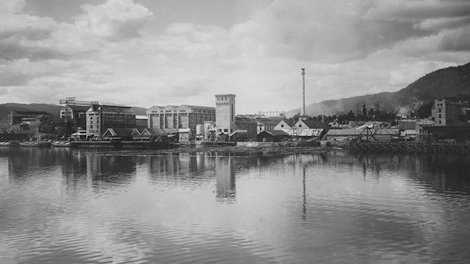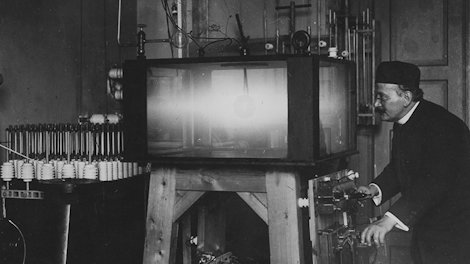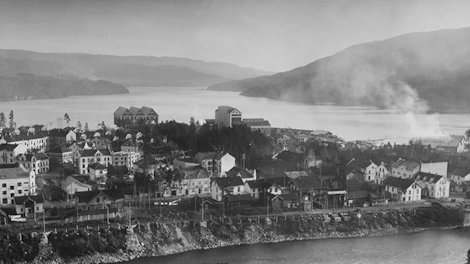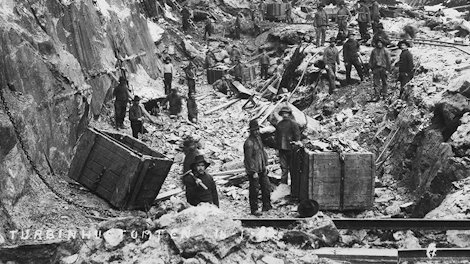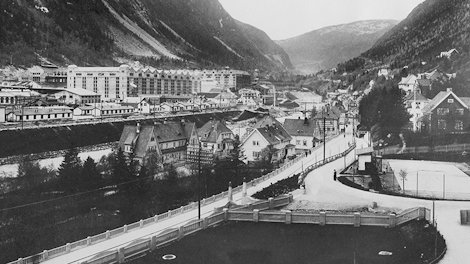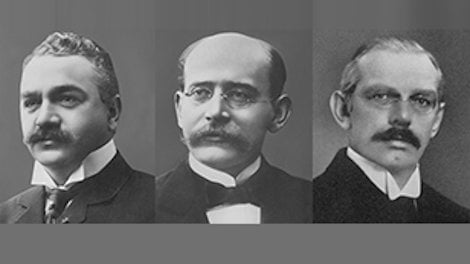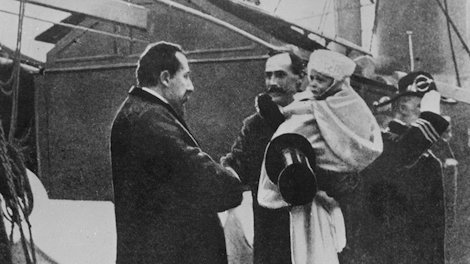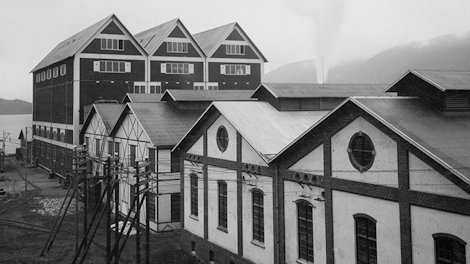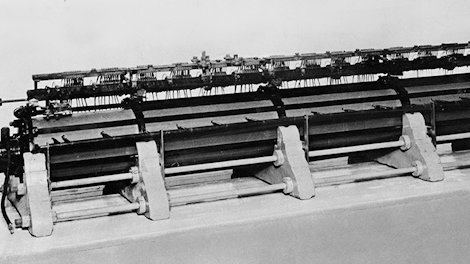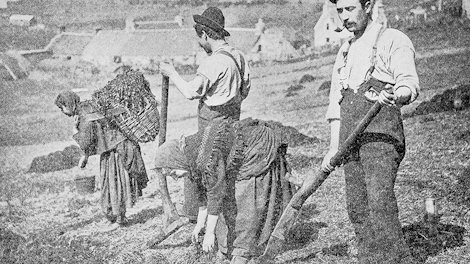The Norwegian professor believed that it was possible to launch a projectile using an electromagnetic field instead of gunpowder. In pursuit of this goal he came up against many problems, among them the occurrence of short circuits that appeared as arcs.
Birkeland thought he had found a solution to this, and in 1901 he applied for a patent on a technique to avoid arcing due to short-circuiting of the electrical charge. He had also noticed a smell of nitrogen oxide in connection with these short circuits.
Fateful meeting on Friday 13, 1903
On Friday 13 February that year, Kristian Birkeland was invited to dine with the Norwegian cabinet minister Gunnar Knudsen. The engineer Sam Eyde was also present. He sat next to the host’s daughter, Lulli Knudsen, with Birkeland on her other side. This was their first meeting.
Eyde gives the most detailed account of their conversation. Birkeland asked Eyde what he was currently working on, and Eyde described his efforts on extracting nitrogen, as well as the hydroelectric power rights he had secured.
“What I want most of all is the most powerful electrical discharge on earth,” Eyde said. To which Birkeland answered: “That I can get for you.”
In a speech two years later, Birkeland said it was fate that brought the two together just a few days after he had first observed the arc of flame.
No time to lose
During the course of the dinner with Knudsen, Birkeland and Eyde’s discussions progressed so far that they agreed meet again – the following day. And just a few days later they signed an agreement to apply for patents on the method Birkeland had discovered. These patents, and several later patents, were granted in Birkeland’s name. Eyde was perhaps, at this stage, more concerned with securing their rights and getting the work under way.
On 20 February, Birkeland submitted a patent application for “Ways of using electricity to produce nitrogen from the air and other gas compounds.” This is considered patent number one for Norsk Hydro.
Apparatus for nitrogen compounds
In this patent, the electric arc’s special qualities are defined in more detail. The tempo of their work and the detailed description makes it clear that Birkeland had already acquired extensive knowledge in this area before he met Eyde.
Some time would pass before the full contents of their agreement came to light; the two men were playing their cards close to the chest.
Sam Eyde’s big day
That first dinner meeting proved to be fateful to others too. The date remained important to Eyde. He sent flowers to his dinner partner, Lulli Knudsen, on that day for years afterwards. And when he married Elida Simonsen 10 years later – the date chosen was the same – 13 February.
Later it was commonly believed that Eyde first got the idea of extracting nitrogen from the air from a demonstration Birkeland gave of his electric cannon. In his 1939 memoir, Eyde wrote that Birkeland held the demonstration on 6 February 1903, but the demonstration was actually held four weeks later, on 6 March 1903.
The following day, 7 March, the national daily newspaper Morgenbladet wrote: “The shot fired yesterday with a 10 kilo projectile was not altogether successful in that during the firing some wiring was burned and the cannon was rendered useless. According to the professor, this would only take half an hour to repair.”
Updated: August 17, 2020








